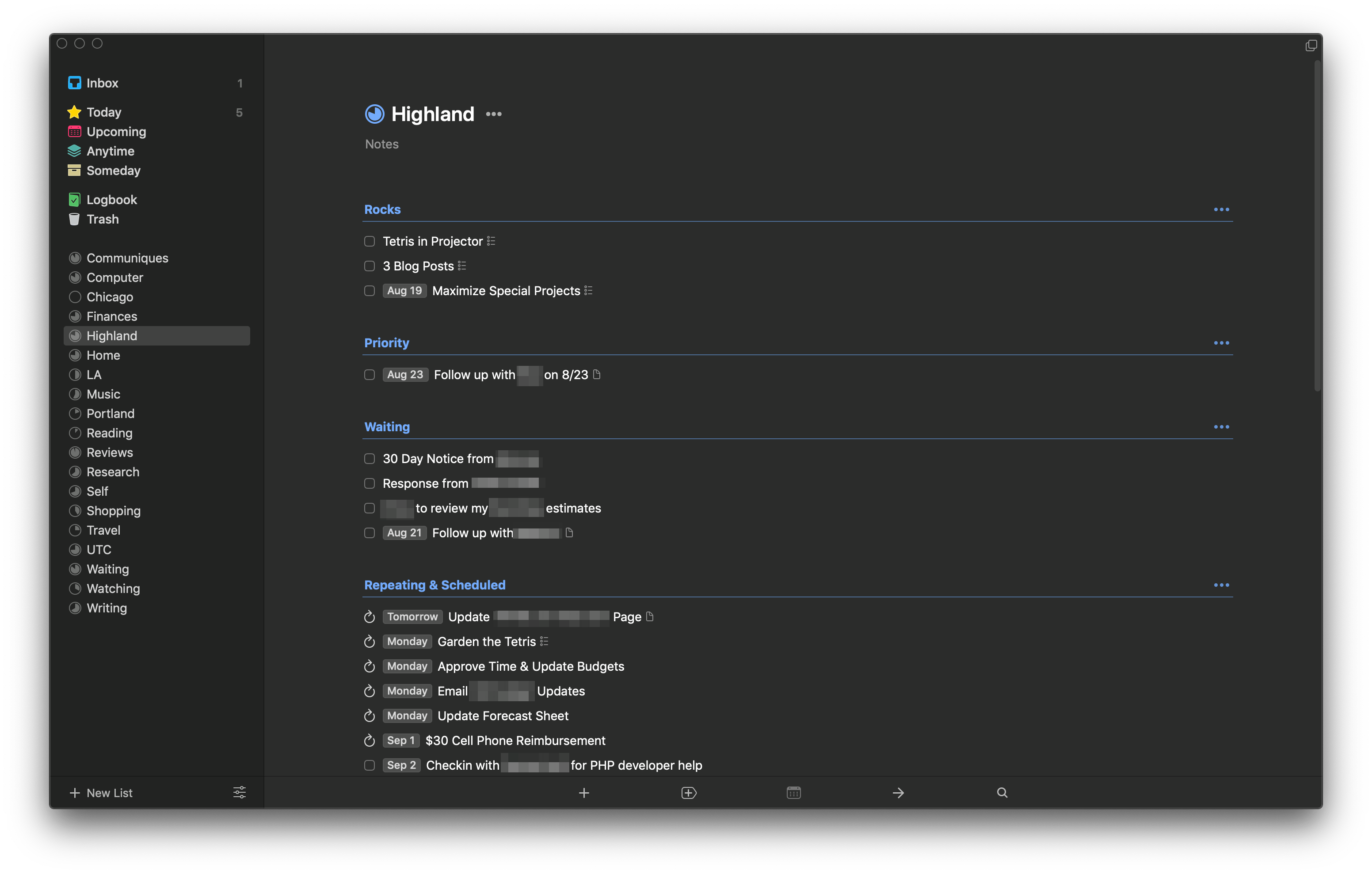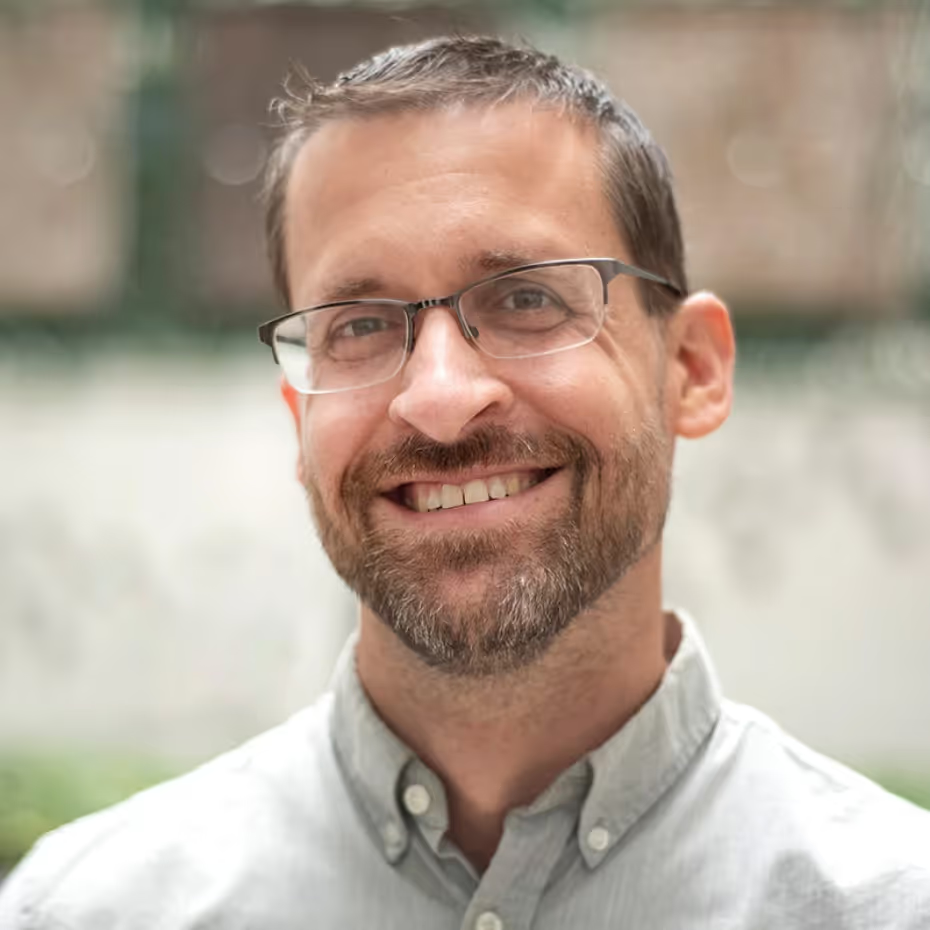I am going to tell you a story about the most damaging piece of internet wisdom I’ve ever read.
Several years ago, some successful person quipped on Twitter:
“I don’t keep a to do list. They only weigh you down. I live in the moment. I always know what I need to do now and I do it.”
I bought into this philosophy hook, line, and sinker.
Besides, at the time I was a full-time developer so my to-do list was effectively my team’s kanban board. My future event horizon was effectively two weeks: our sprint boundaries.
Less is more, right? Why keep a to-do app or list when I can just live in the moment and do what needs to be done?
Fast forward several years and my responsibilities have expanded significantly. I am no longer a full-time developer on a just project or two. Now I’m Highland’s Director of Software Development, which means I manage other developers and help on a myriad of projects and initiatives. I need to be aware of events, objectives, and scenarios that are multiple years out.
Like a frog in a pot of boiling water, my anxiety levels slowly ratcheted upwards. It felt like I was spending most of my energy keeping everything in short term memory or — worse — figuring out clever ways to remind myself to do things in the future. I had just loop-holed my vow to not “keep a to-do list” by creating a mental to-do list!
Something had to change.
I shared my predicament at the Conscious Company Leaders Forum this year. Fellow attendees recommended I check out David Allen’s Getting Things Done framework. I was hesitant at first but decided to give it a shot for science. After a week or two of trying the system, my world was turned upside down. I was energized and focused. A clarity overcame me that I didn’t realize was possible.

Entrepreneurial Operating System® cadences. At a very high level, EOS® breaks the year up into 90-day chunks and installs various periodic rhythms to your business. We’ve been using the system for about two years now. It has brought a level of order and clarity to the company that I didn’t know was possible.
GTD and EOS complement and reinforce each other. For example, my GTD “Projects” map nicely to EOS “Rocks.” My GTD “Weekly Reviews” harmonize with my EOS “Clarity Breaks.” And my GTD “Next Actions” map perfectly to my EOS “To-Dos.”
Besides GTD and EOS, I have some of my own daily, weekly, and annual rituals that I’ve adopted over the years. I have morning and evening reviews to prepare for and reflect on the day. Each week, I’m sure to schedule “Deep Work” or “Flow” time. During the last week of the year, I follow a set of rituals to help me close out one year and begin a new one. I reflect, set intention for next year, clean up hard-drives, and purge possessions (to name a few).
Now, all these rituals fit together in a harmonious time-sculpture. If you told me that sounds like authoritarian way to live… I wouldn’t disagree with you. It is highly structured and takes discipline. As an artist, I can say the greatest benefit is a persistent feeling of confidence about where I’m directing my energy. When creating, I’m free to create. When meeting with people, I’m free to be fully present. And when relaxing, I’m free to relax. That inner dialogue saying, “you should really be doing something else,” has all but vanished.
If you still don’t believe me when I say this is a liberating lifestyle choice, consider music. Typically, songs have a consistent tempo. If you’re playing music with others, sure, you can ignore the tempo, but your results aren’t likely to be very aesthetically pleasing. There is a social contract between musicians that you ought to honor the tempo.
Our society has a similar social contract. Measured with clocks and calendars: this thing we call “time.” If you are a participant of society, you have already implicitly agreed to this contract. Used together, GTD and EOS keep me in touch with time, liberating me to riff within the structure.
Just like in music, I’m always free to bend or break the rules, too! Some mornings I skip my morning review because I simply don’t feel like doing it. Sometimes, we’ll skip our Level 10 meetings because we don’t have a quorum or there are literally no issues to discuss. And on vacations, I typically skip everything!
So: a challenge to you! What piece of internet wisdom have you bought too much into? What “true-ism” or story are you committed to believing? Imagine for a moment what it might be like to let that go. Give it a shot! You can always go back to how you were, but it may be the only way to become who is next.



